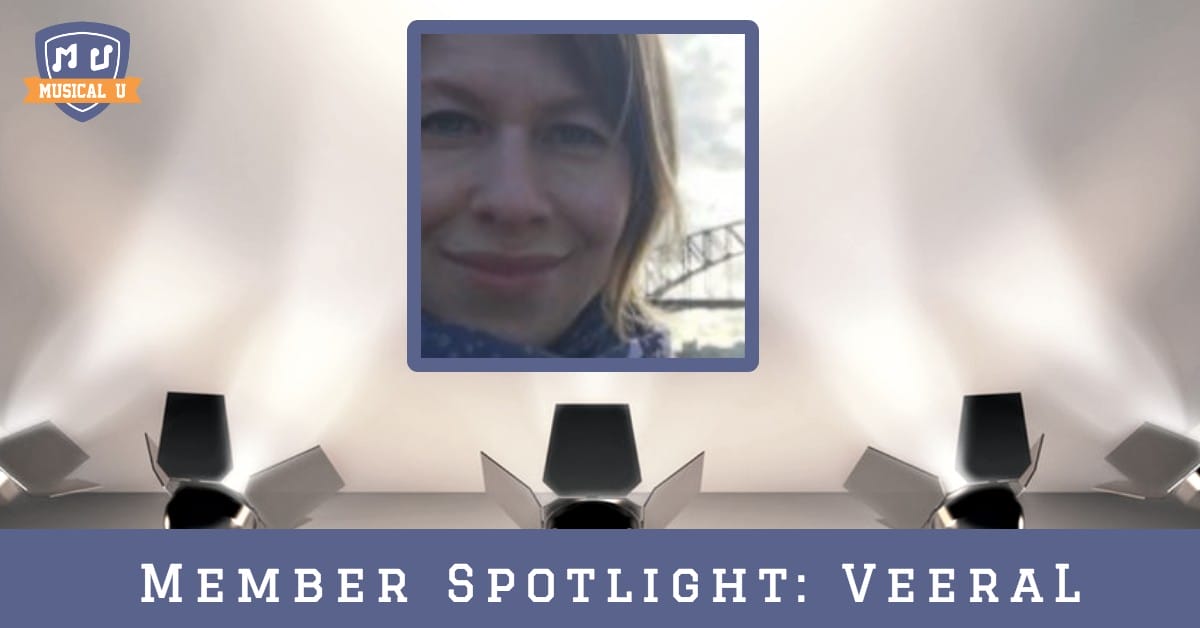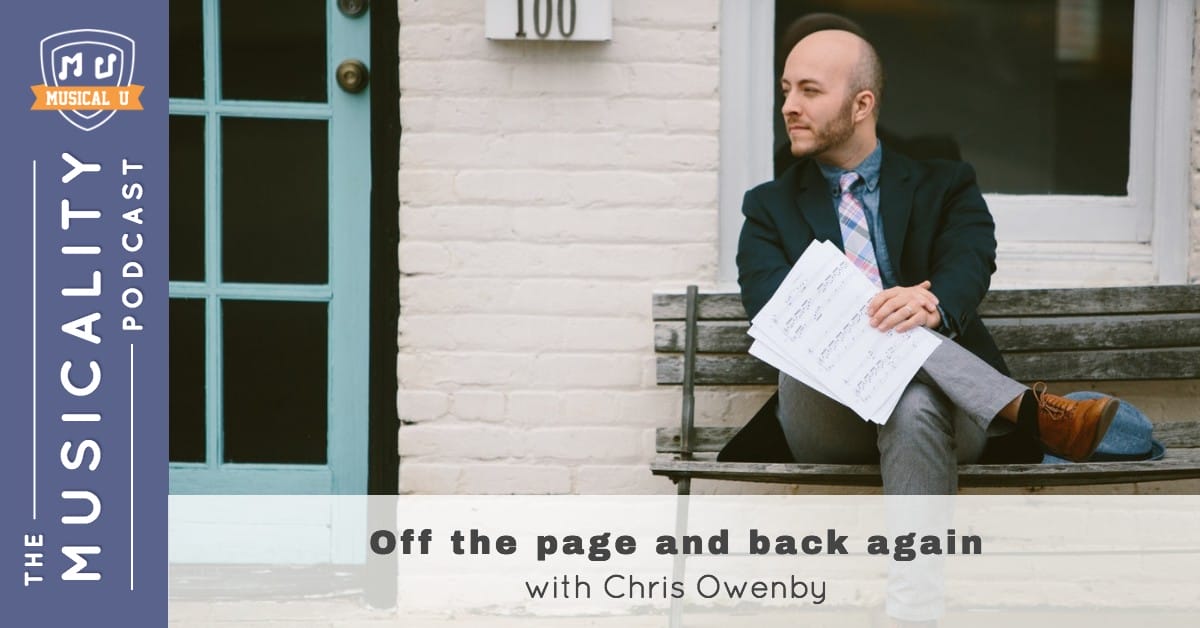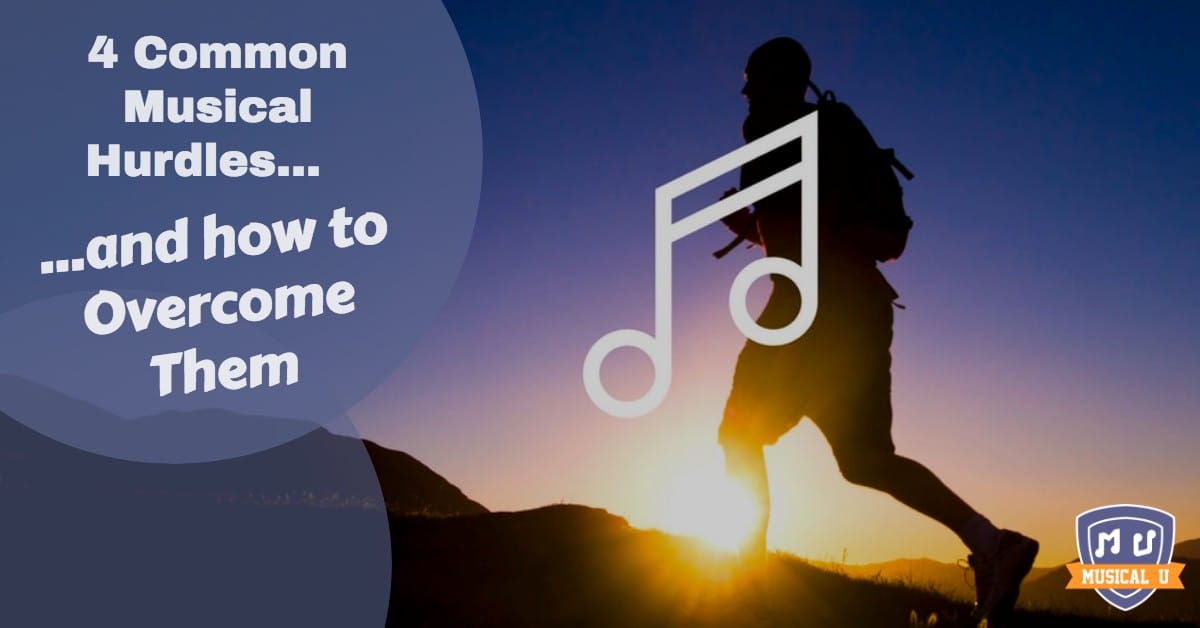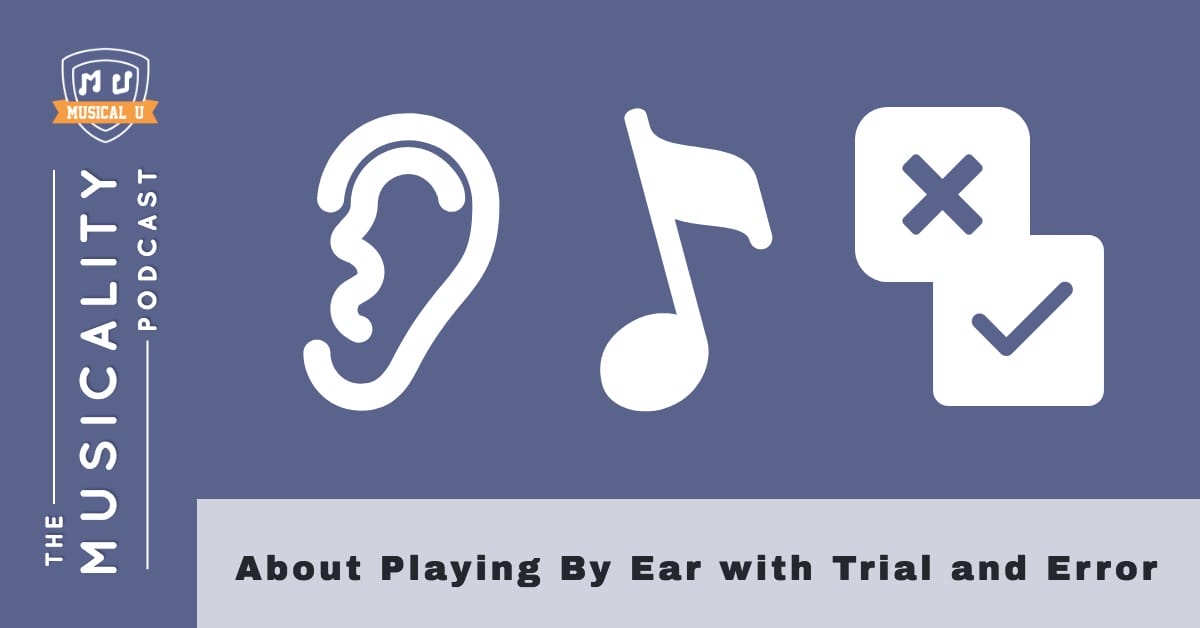https://www.musical-u.com/learn/10-steps-learn-play-violin-ear/
Are you ready to branch out from sheet music to start learning songs you like or tunes you’ve heard by ear? Playing violin by ear is a skill that can take years to get comfortable with, so it’s a good idea to start experimenting with it early on. With TakeLessons https://www.musical-u.com/learn/10-steps-learn-play-violin-ear/
You hear a favorite tune on the radio and jump to your in…
https://www.musical-u.com/learn/how-to-transcribe-music-before-you-start/
You hear a favorite tune on the radio and jump to your instrument, trying to pluck out the melody. Frustrated? Don’t worry. Read on and in this new series we will show you how to transcribe music like the pros. https://www.musical-u.com/learn/how-to-transcribe-music-before-you-start/
Where’s the beat? Read on for your introduction to how sy…
https://www.musical-u.com/learn/rhythm-training-101-study-syncopation/
Where’s the beat? Read on for your introduction to how syncopation affects the feel of music, how to develop your ear for it, and how to apply it to your instrument to create your own songs with syncopation. Then, try our syncopation exercises to practice what you’ve learned! https://www.musical-u.com/learn/rhythm-training-101-study-syncopation/
What is talent? Are you born with it – or does it seem to…
https://www.musical-u.com/learn/talent-vs-practice-in-music/
What is talent? Are you born with it – or does it seem to develop over time? The amount of controversy over nature vs nurture can be somewhat overwhelming. Let’s explore this today… https://www.musical-u.com/learn/talent-vs-practice-in-music/
Looking for a harmonically ambiguous chord to add a littl…
https://www.musical-u.com/learn/raise-the-fifth-listening-for-augmented-triads/
Looking for a harmonically ambiguous chord to add a little mystery to your band’s latest hit single? Look no further than the rarely used and incredibly underappreciated augmented chord. https://www.musical-u.com/learn/raise-the-fifth-listening-for-augmented-triads/
Beyond Classical, On and Off the Page, Musical Roadblocks, Trial and… Improvement
With established musical curriculums, standardized tests, and one-size-fits-all online courses, it can be easy to forget that every musical learning journey should be unique, with material and coaching customized to fit the student’s learning style and goals.
This week, we explore the ways in which music education can be tailored in such a way that the student reaps maximum benefit from their practice. We interview a Musical U member on how she renewed her passion for music by learning on her own terms, and speak to a music educator who has successfully cracked the code for tailoring online music lessons to a student’s needs.
However, we also recognize that musicians will have a slew of shared experiences during their journey. A guest expert discusses four commonly-encountered hurdles in learning music, and how to get past them – chances are, you’ll be able to relate to at least one of them! Finally, we look at the coveted skill of playing by ear… and though there are multiple ways to approach this, our “trial-and-improvement” method will yield the best, fastest results – whether you’re just starting out or already have a chunk of experience.
Let’s dive in…
Beyond Classical Training
Music education is not a one-size-fits-all.
While classical training is perfect for those looking for rigorous discipline, success in the conservatory, and a specific kind of mastery, it fails many of its students – for example, those who would benefit from a different style of teaching, or those seeking to write music, improvise, and collaborate with others.
 Musician and music teacher VeeraL’s experience in the world of classical music almost made her quit music for good – until she discovered a new approach to learning that emphasized musicality over hitting all the right notes, improvising over playing strictly from sheet music, and analyzing melodies and rhythms over learning the piece note-by-note.
Musician and music teacher VeeraL’s experience in the world of classical music almost made her quit music for good – until she discovered a new approach to learning that emphasized musicality over hitting all the right notes, improvising over playing strictly from sheet music, and analyzing melodies and rhythms over learning the piece note-by-note.
Read our fascinating interview with Veera over at Musical U Member Spotlight: VeeraL to discover how she took her musical journey into her own hands to make learning as fun, relevant, and rewarding as possible – and how Musical U helped her along the way.
As musicians, we are constantly feeling stress and uncertainty about our abilities when performing, especially with all the competition out there. While it’s fine to be competitive, we could all benefit by learning to be more cooperative. Smart Music explores cooperative learning in the large ensemble.
VeeraL touched upon how she is able to use the modules from Musical U in her own teaching. We learned about another method, Gordon’s Music Learning Theory, a couple of weeks ago in our interview with Donna Schwartz. The Improving Musician talks about how this method can also help to teach musical understanding.
Playing by rote is a great way to use your ear when learning a piece of music. 88 Piano Keys explored how rote methods can also be used to ignite creativity. Get those creative juices flowing with this fantastic musical method!
On and Off the Page
Though playing by ear and playing from sheet music are often placed at two opposing ends of a spectrum, they needn’t be!
As we learned in Off the page and back again, with Chris Owenby, combining both these methods in musical learning yields extremely positive results – it makes you a more versatile, expressive, and “natural” musician.
 Chris’s insights as a musician and music educator don’t end there. Check out the full interview for his take on online learning, sheet music vs. playing by ear, and the benefits of finding patterns in the music you’re playing.
Chris’s insights as a musician and music educator don’t end there. Check out the full interview for his take on online learning, sheet music vs. playing by ear, and the benefits of finding patterns in the music you’re playing.
It was fascinating to hear the story of how Chris’s grandmother first introduced him to stride piano. While this method is typically associated with jazz, you will also find it being used in Gospel music – Jonny May shows us how.
Learning to play by ear had some lasting benefits to Chris’s development as a musician. He is able to play with more confidence and experiment in ways that would not be possible without this foundation. Digital Piano Review Guide gives an introduction on how to play the piano by ear to get your journey started.
Chris has amazing diversity in his musical background and experiences, and it was such a pleasure to get to know more about his methods and musical journey. Learning how others approach music learning is very important – particularly how music education is approached in other cultures. Beyond the Music Lesson explores this topic on their podcast.
Conquering Musical Roadblocks
While every musical journey is unique, there are certainly shared experiences – and with that come shared frustrations and roadblocks!
In 4 Common Musical Hurdles – and how to Overcome Them, Sheet Music Scanner’s David Zemsky discusses some barriers to musical success, how to maneuver past them, and an incredibly useful tool that will help you make sense of that tricky piece you’re trying to learn.
 If you’ve ever felt like you don’t have the time to practice, don’t know where to start, are suffering from writer’s block, or feel just plain discouraged – this is an absolute must-read!
If you’ve ever felt like you don’t have the time to practice, don’t know where to start, are suffering from writer’s block, or feel just plain discouraged – this is an absolute must-read!
“How many hours a day should I practice?” is a common question among many musicians. While there is no definitive answer, you should consider how much you can realistically dedicate to your musical instrument. Noa from Bulletproof Musician explores this topic.
Though your musical journey will be filled with accomplishment, pleasant surprises, and countless hours of fun, there will always be moments of frustration and difficulty along the way. Performer Mag touches upon some techniques to break songwriting block – break through your plateau and get some great music made!
When working through these rough patches, it’s important to remember that there are thousands of musicians online waiting to help you find your way through, with lessons and experiences that can make the difference in finding the solution. For example, while learning to sing rock may sound easy, there are some common mistakes that singers make along the way – The Naked Vocalist details some pitfalls and how to avoid them.
Trial and… Improvement
Playing by ear is one of the most sought-after musical skills out there, and it can be hard to know how to approach it.
The truth is, playing by ear is something that you must practice, practice, and practice some more – making plenty of mistakes along the way, and using them as a basis to improve.
 However, this should not be random, brute-force practice – certain training and tools exist to accelerate this learning process, fundamentals and skills that will help you master this skill faster, and with minimal frustration.
However, this should not be random, brute-force practice – certain training and tools exist to accelerate this learning process, fundamentals and skills that will help you master this skill faster, and with minimal frustration.
Tune your ears into About Playing By Ear with Trial and Error to learn how you can develop this skill in a guided way that will minimize frustration and maximize results.
Trial and error is a fun part of learning to play by ear – and one that is necessary even for experienced musicians! Finding ways to make this into a game can take some of the stress out of the task. Lessons in your Home shares some fun games to get you started.
The most difficult part of any journey is getting started. This holds true for musicians that want to go down the path of playing by ear. Fire Inside Music has a step-by-step guide to get you started with playing the piano by ear – if you are a beginner, you won’t want to miss this!
We’ve talked in-depth on the Musicality Podcast about the benefits of ear training, but there are plenty that we haven’t covered… yet. Justin from Justin Guitar is no stranger to playing by ear, and shares 7 benefits that he has enjoyed through learning this powerful skill.
A Shared Musical Experience
A fascinating paradox of learning music is that while everyone will learn best under different conditions, there are countless experiences that so many musicians share – perhaps it’s nailing that tricky chord progression, or playing your first gig, or learning a second instrument.
Your musical journey is sure to entangle with others’ – whether they’re your teachers, students, or collaborators.
This shared musical experience is what takes music to a whole new level of enjoyment. Take advantage of that – if you usually play solo, branch out and ask a friend if they’d like to jam. Post your music online, and ask for feedback. Do a music lesson swap with someone who plays a different instrument than you.
Joining a community of musicians will give you access to advice, support, feedback, and help when you get stuck – plus, you get to share what you’ve learned with others, and be a part of their journey too!
The post Beyond Classical, On and Off the Page, Musical Roadblocks, Trial and… Improvement appeared first on Musical U.
Gaining insight from musicians you admire can be a helpfu…
https://www.musical-u.com/learn/inspiring-songwriting-quotes/
Gaining insight from musicians you admire can be a helpful and motivating way to guide yourself through your own creative process. Soak in the words and be inspired. https://www.musical-u.com/learn/inspiring-songwriting-quotes/
There’s no denying that it takes a lot of personal motiva…
https://www.musical-u.com/learn/music-mentor/
There’s no denying that it takes a lot of personal motivation and dedication to succeed in meeting one’s musical goals. Let’s discuss some tips for finding an amazing music mentor. https://www.musical-u.com/learn/music-mentor/
About Playing By Ear with Trial and Error
You may be surprised to learn that a large part of learning to play by ear is in fact trial and error! However, you can accelerate your learning by adding some method to the madness – with the proper tools and training!
Listen to the episode:
Links and Resources
- Interview with Chris Owenby
- “Start Playing by Ear” module preview
- About Perfect Pitch
- Interview with Professor Anders Ericsson
- Roadmaps at Musical U
Enjoying The Musicality Podcast? Please support the show by rating and reviewing it!
Transcript
In our recent episode with Chris Owenby of Practice Habits and The Online Piano Course we talked about how he learned to play by ear through painstaking trial and error – and I mentioned how at Musical U that’s an approach we recommend too.
That might have sounded surprising. For a website promising to help you play by ear, isn’t trial-and-error a bit lame? We should be able to do better than that, right?
Well, yes and no.
I have no hesitation saying we teach a trial-and-error approach because there is far too much mysticism and misunderstanding around how playing by ear works and I feel obliged to try to counterbalance that a bit by just straight up telling it how it is. But “trial and error” doesn’t mean that learning to play by ear has to be frustrating or tedious, or that it’s pure guesswork all the way. Absolutely not.
So let’s talk about this “trial and error” approach to playing by ear.
Inside Musical U we have a module called “Start Playing By Ear”. It’s designed to help you get 100% clear on what playing by ear is, and isn’t, and how learning to do it actually works.
And I’m going to tell you its most valuable part right now: You learn to play by ear by trying to play by ear.
This is a “big secret”, in the sense that you’ll meet lots of musicians and music educators who try to get around that fact and pretend there’s some trick to it. As we’ll be talking about in a minute, it can be much cleverer and more effective than *just* trying to do it. But at its heart, playing by ear is a learnable skill and we typically learn musical skills through repetition and practice.
So the one big message in that training module, and one I hope you’ll take away from this episode is this: You learn to play by ear by starting to play by ear.
The first time you do it you’ll get it almost all wrong. But then next time you’ll be a bit better.
Because “trial and error” should really be called “trial and improvement”. As long as you’re paying attention you should be learning from those errors and avoiding them next time.
The more you do it, the better you get. And here’s the critical thing to understand: it works this way for *everyone*. This isn’t a cop-out method you use if you’re not gifted. With the exception of the tiny percentage of people who have perfect pitch (and check out our Perfect Pitch episode for more on that) – everyone else, even those who say playing by ear came naturally, has learned to do it through practice, and making a lot of mistakes. Check out our episode with Professor Anders Ericsson for more about this, and how every skill we think might be a “talent” or a “gift” is actually learned and learnable. All that differs is how *quickly* we learn it.
So yes, you might encounter a 15 year old who has a great ability to play by ear. But I guarantee they didn’t get every note right the first time they tried it. And what distinguishes them from the musicians who has tried playing by ear and really struggled – it’s just the speed of that trial-and-improvement process.
So that’s the situation – and there’s some really good news. Because although your natural ability to learn this skill may not be as swift as the so-called prodigy – there are extensive proven methods you can use to accelerate that process.
That’s why I’m not worried about telling you that at Musical U we see learning to play by ear as a process of trial-and-improvement that will take practice. Because I know we also equip our members with the training and tools to drastically accelerate that process. I won’t go into detail here, but in short our approach is to equip you with the core ear skills that give you the building blocks underneath playing by ear. We help you recognise notes and chords by ear, so that when you sit down to play something by ear the chances of you getting each note right are dramatically higher than if all you’ve done is practice guessing.
It’s a bit like if you were trying to learn to paint portraits. Sure, you can just sit there and practice painting faces from photographs all day every day. And you’ll gradually get better. And fundamentally that is going to be how you improve, through trying again and again. But compare that with the aspiring painter who gets a few lessons in colour mixing, and different paintbrush techniques, and how light and shading work. The painter who has studied those fundamentals and built those core skills is going to improve in their painting dramatically faster than one who *only* goes through the process of trial and error. And will reach the point where it’s easy to sit down and paint a wonderful portrait first time, every time.
That’s what the process of learning to play by ear looks like. And so I hope this episode has both encouraged you to know that this skill is certainly within reach if you want to learn it. And that there are tools and techniques available to you which can dramatically accelerate that learning process for you. If you’re curious to know more about how that works you can check out the free previews for our Roadmaps at Musical U by visiting musical-u.com/training – or I’ll put a direct link in the shownotes for this episode at musicalitypodcast.com.
The post About Playing By Ear with Trial and Error appeared first on Musical U.
Minor keys tend to have rich harmonic possibilities. Some…
https://www.musical-u.com/learn/hearing-chord-progressions-part-3-minor-keys/
Minor keys tend to have rich harmonic possibilities. Sometimes the the chord qualities throw off our ear. But if we remember to listen for the bass we can better understand how to use these chords. https://www.musical-u.com/learn/hearing-chord-progressions-part-3-minor-keys/